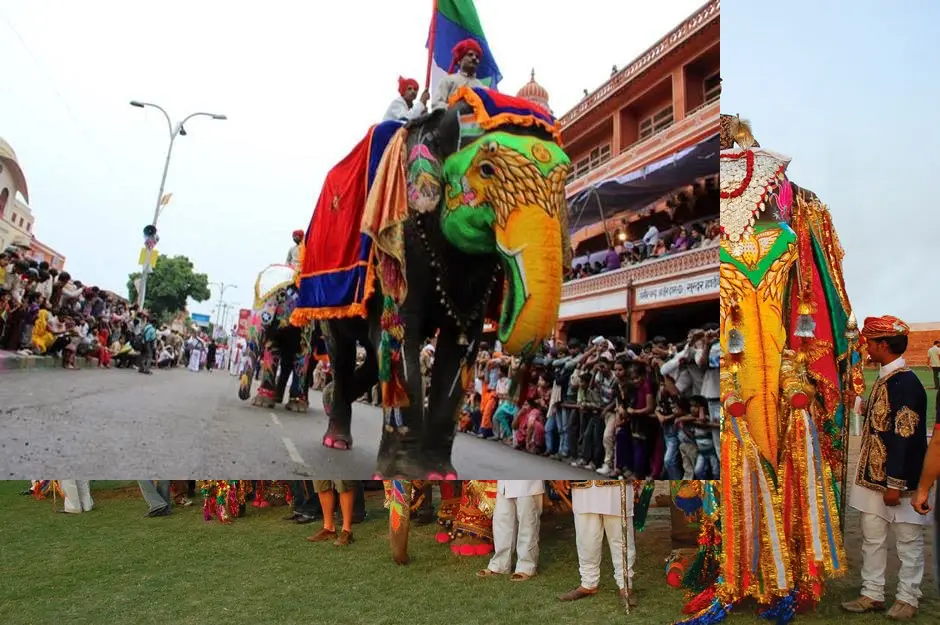Teej festival in Rajasthan
Teej festival of Rajasthan is not limited to swings, henna or dressing up in traditional clothes but goes way beyond
It was a huge procession of decorated elephants, adorned camels and colourful horses, along with the cannon carriage, bullock carts, horse-drawb buggi and well-decorated rath. Seeing all these, one might imagine standing in a royal palace. Indeed, one would not be far off the mark as the place is a Land of Kings and Queens ~ Jaipur in Rajasthan. Rajasthan is not only famous for its rich royal culture or lush green forest but for its festivals too. The occasion was the colourful festival Teej, which is all about the reuniting Goddess Parvati and her husband Lord Shiva. The other significance of the festival is the beginning of monsoon in this dry state.
On 30-31 July, on the occasion of Teej, the whole city wore a festive look. Our tourist guide from Rajasthan Tourism informed us that festival has a very old legacy, more than a century old. On this day, an idol of Goddess Parvati (Teeja Mata) is taken out in a royal procession from the City Palace so that the general public can have a chance to pay homage to the Goddess. All the year, the Teej Mata is under wraps at the home of the royal family, only on this occasion, it comes out.
Also read: Agra's colonial connection (travellernook.com)
Meanwhile, some of us were eager to have a look at the preparations taking place inside the palace ground and we had a plenty of time to do so. The scene inside was rather attractive, or to say, it was worth spending one hour inside. On one side, there was a row of elephant standing there all decked up, with lions and deer painted around its eyes and legs. Their mahouts got busy throwing a sheet and then few other adornments over these giants. There were a few camels and horses as well. In one corner was a group of women dressed in finery, all in black, and a few men playing music.
Also read: Delhi’s Jama Masjid: An architectural marvel (travellernook.com)
After spending some time watching, clicking photographs and talking to the people around here, we finally made our way to the main road in search of a vantage point to view the procession. The sitting arrangements were made on the terrace of the Hind Hotel opposite Tripoliya Gate, where there was a row of chairs filled with foreign tourists. Luckily, despite a huge crowd, mostly VIPs, we grabbed our seats. Every now and then, there would be a sudden bout of drizzle.
Suddenly, sounds of a band emanated from the Tripoliya gate followed by a procession of painted elephants, looking grand and beautiful. Following them were different cultural performances like Kachchi Ghodi, Gair, Kalbeliya and Chakri dances. The procession also included cannon carriage, bullock carts, horse buggi and decorated rath. A number of bands also accompanied the procession. Then finally came the palanquin of Goddess Parvathy, which was a beautiful red canopy pulled by eight men dressed in their finery. This kilometre-long procession wound its way through the lanes of the Old City (City Palace), meandering through Tripolia Bazar, Chhoti Chaupar and Gangauri Bazaar to wind up at the Chaugan Stadium. Unlike VIPs, who were on the roof, many local people dressed in their best traditional clothes made their way to the lanes to witness the fervour. All in all, the festival is a mix of colour, dance, music and mouth watering cuisine, particularly Ghewar. In another words, Teej of Rajasthan is not limited to women on swings or applying henna, but goes beyond.
Also read: Elephant catwalk in Rajasthan (travellernook.com)
.png)
